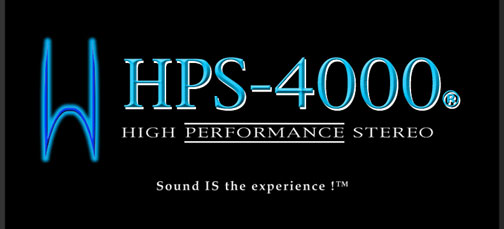A BRIEF HISTORY of HIGH PERFORMANCE STEREO™
and HPS-4OOO® SOUND

Spring, 1975
Boston’s WGBH discards a design for an audio tape duplication system in favor of a new design submitted by John F. Allen. Subsequently Allen is contracted to build the first real-time one-to-one (copies recorded at normal speed for highest quality) tape duplication system featuring multiple and simultaneous noise reduction systems.
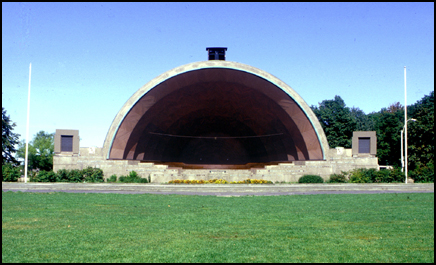
1976
John Allen designs and installs a new sound system at Boston’s Esplanade, site of the outdoor Boston Pops concerts founded by Arthur Fiedler. This installation marks the first successful implementation of stereo at this facility.
July 4, 1976
Only one week after its installation, the sound system is used for the Boston Pops concert in celebration of America’s bicentennial and conducted by Arthur Fiedler. Personally operated by John Allen, this sound system was also the source of all the feeds for the outlying sound reinforcement as well as the CBS television network. The Guiness Book of Records lists the audience for this event of over 400,000 as the largest concert audience in history. For his contributions to this extraordinary event, John F. Allen is awarded a special commendation by the President of the United States.
1979
The years of experience gained in the development and personal operation of such a large sound system prove invaluable as John Allen decides to develop the first new stereo playback system for motion picture theatres in decades. He founds a new company under his own name and begins researching the needs and potential of film sound. He quickly realizes that the future will be digital and that theatres are not being properly equipped for the sound formats available in 1979, let alone the demands of digital.
1980
BOXOFFICE Magazine publishes the first of three planned articles about cinema sound written by John Allen. The articles prove to be so well received that he continues to write for the magazine for the next 40 years.

November, 1980
The first of what will later be named the HPS-4000 sound system is installed at the Community Playhouse in Wellesley, Massachusetts. Attendance at the theatre increases over 25 percent in the first year. The sound system is digital ready, distinguished by the first use of modern 3-way fully horn loaded loudspeakers behind the screen. Even more remarkable to many is the debut of the Allen Surround Array™. This marked the first time that surround speakers had been successfully placed around the theatre by mathematical formulas, yielding a coverage uniformity of ±1/2 decibels and a total absence of single speaker localization.
1981
A second HPS-4000 system is introduced for small cinemas. As with the original system, this one is also based on the use of 3-way fully horn loaded loudspeakers.
1982
John Allen becomes the first to design motion picture sound systems by computer.
1982
The first 70mm HPS-4000 installation is completed at Broadway’s Rivoli Theatre in New York City, site of the world premiere of the Todd AO film format. The installation quickly becomes regarded as “The best sound on Broadway.”
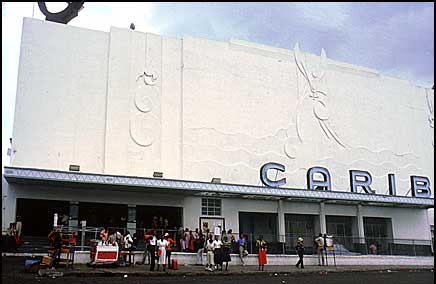
1982
The HPS-4000 system is the first modern motion picture sound system to be exported. The installation at Jamaica’s huge Carib theatre is the most powerful motion picture sound system ever, ultimately capable of producing 1400 acoustic watts; equaling the acoustic power of 20 symphony orchestras.

1983
After a two year development, a new super-tweeter is introduced that for the first time corrects for the severe coverage distortion effects of a movie screen. First called the MMTM, the unit is later updated and renamed the 545-T.
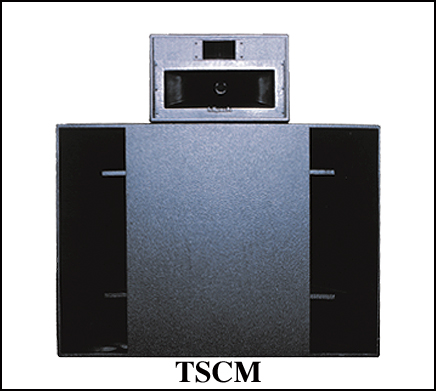
1983
A new medium size 3-way screen speaker is introduced for use in mid-sized theatres, bringing the number of HPS-4000 systems to three.
1983
Boston Magazine names the Wellesley Community Playhouse the BEST THEATRE IN BOSTON, noting the sound, and does the same in 1984.
1984
The company’s name is changed to High Performance Stereo™ and the trademark HPS-4000 is adopted as the official name of these sound systems. The HPS-4000 sound system is selected by Plitt Theatres Inc. for their Los Angeles flagship Century Plaza Theatre. This installation marks the first use of 4-way fully horn loaded loudspeakers. There are now four classes of HPS-4000 sound systems.
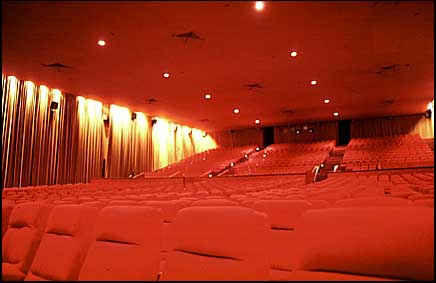
December, 1984
The Century Plaza installation makes its debut to the Hollywood film community with the world premiere of digital sound in a commercial movie theatre. Critics hail the HPS-4000 sound system as “The best in the area if not the country.”

February, 1985
HPS-4000 and the Century Plaza Theatre make history once again with the first ever public presentations of a feature film with a digital stereo soundtrack. The film used for this historic occasion is Walt Disney’s FANTASIA, coincidentally, the first film ever presented in stereo.

May, 1985
Digital film sound makes its east coast premiere in Washington D.C. Again, the film is FANTASIA, presented in HPS-4000 and digital sound.
Fall, 1985
The Society of Motion Picture and Television Engineers invites John Allen to co-chair the first digital film sound papers session to be held in a theatre during their national convention.
1986
Returning to the place where it all began, Boston’s WGBH begins the first broadcasts of digital audio. The sound system used to demonstrate these programs is an HPS-4000 installed at their studios.
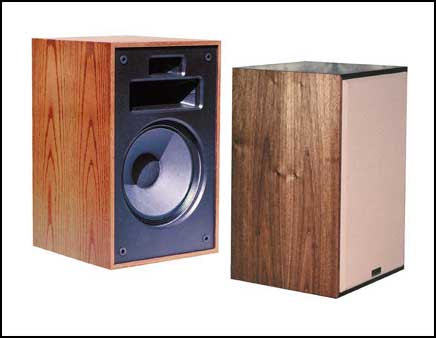
1986
A major advance in surround speaker technology, the HPS model SR-70™ is introduced.
September, 1988
After extensive comparisons, Showscan selects HPS-4000 for their Los Angeles headquarters as well as all their special venue theatres.

October, 1988
The Boston Ballet names John Allen as their sound director.
Watch an interview with John Allen about his work with the Boston Ballet.
https://vimeo.com/7788017
1989
Five years after John F. Allen introduced digital sound to movie theatres, the first digital release prints begin to appear. Theatres equipped with HPS-4000 sound systems are ready. No HPS-4000 speaker system requires replacement.
1991
Both the New York Times and Newsweek Magazine name the Boston Ballet orchestra “the best sounding orchestra in ballet.” Neither writer is aware of the totally transparent sound reinforcement system and makes no mention of one.
1994
After a long evaluation in which over 20 different speaker systems are compared, the National Park Service chooses HPS-4000 as the standard sound system for all new installations in the United States park system. Since then most of the soundtracks for the films presented in the Park Service’s HPS-4000 theatres have also been either mixed or re-mastered by John Allen.
June, 1994
The Acoustical Society of America convenes a special symposium at the Massachusetts Institute of Technology celebrating the centennial of acoustic pioneer, Wallace Sabine. In recognition of their achievements at the Boston Ballet, John F. Allen and Boston Ballet conductor, Jonathan McPhee are honored by an invitation to address the society on their highly successful collaboration. The event draws a standing room only audience of acousticians from around the world.
1995
Movie theatres featuring stadium seating become widely popular. HPS motion picture loudspeakers are ready, having always been designed with proper coverage contours for stadium theatres.
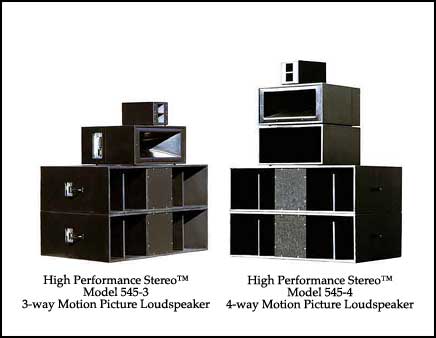
August, 1995
The first of a new generation of HPS-4000 screen speakers, the 545-3 and 545-4, are unveiled.

September, 1995
The roll out of the new speakers continues with the introduction of the new 525 screen speaker.

1997
The National Park Service installs two HPS-4000 XL-class systems in the theatres at the USS Arizona Memorial at Pearl Harbor, Hawaii.
1999
High Performance Stereo™ celebrates 20 years without a single driver failure in any HPS-4000 sound system. No other motion picture sound system has ever achieved such a flawless performance record.
1999
By popular demand, the HPS-4000 web site is introduced at www.hps4000.com.
2001
Despite severe economic problems within the cinema industry, High Performance Stereo™ experiences its best year to date with sales of all classes of HPS-4000 sound systems greater than ever.
2003
High Performance Stereo™ introduces another HPS-4000 first: More Seats Hear Stereo™ and, in theatres with wall to wall screens, All Seats Hear Stereo™. For the first time, full stereo is no longer limited to those seated in the center.
2003
High Performance Stereo™ announces Project 440™. After two years of development with BGW Systems, Project 440™ will be the biggest single improvement in the HPS-4000 sound system in nearly 20 years.
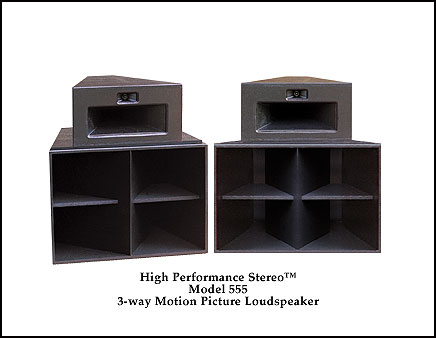
2005
High Performance Stereo introduces the new 555 loudspeaker system and the new G-Class HPS-4000 sound system.
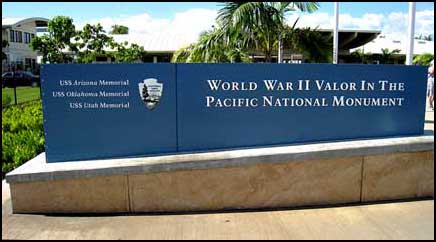
2010
The HPS-4000 theatres at the USS Arizona Memorial at Pearl Harbor are converted to digital cinema. John F. Allen upgrades the sound systems with all new processors as well as amplifiers and personally supervises the soundtrack preparation.
Arizona Memorial update: Since 2015 the park service has elected not to maintain the HPS-4000 systems at the Arizona Memorial theaters. Since then equipment has been changed and inferior equipment installed. No one with the proper equipment or competence has been involved with the theaters. At last report, the film was not running and visitors were forced to watch it on television monitors placed in the front of the rooms.
2012
Another record year in worldwide HPS-4000 sales.
2015
First use of professional balanced-differential power amplifiers.
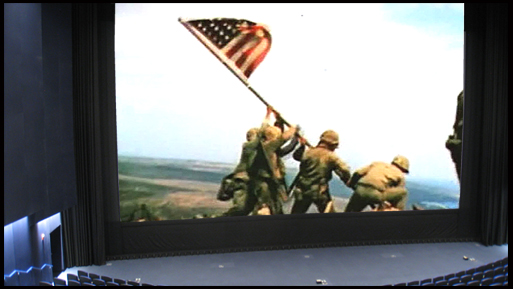
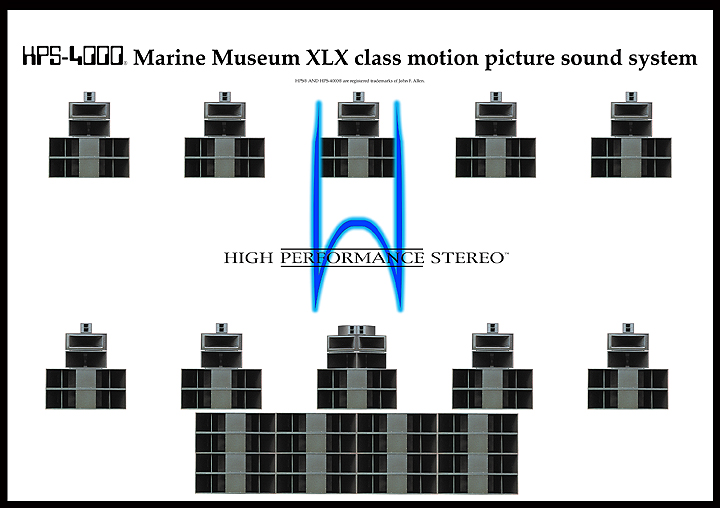
2017
The National Museum of the the United States Marine Corps in Quantico, Virginia opens a new large format theatre. High Performance Stereo is chosen to provide the sound system. John Allen designs a new 15 channel sound system that employs 11 channels behind the 70 by 50 foot screen, plus four surround channels. This marks the first time such a large screen image has had an equally large sound image behind it. This installation has the acoustic power of 36 symphony orchestras and is the most powerful HPS-4000® sound system in the world.

Biography: John F. Allen
John Allen is a native of Newton, Massachusetts. He is a 1973 graduate of Northeastern University, where he attended both the engineering and business colleges. In 1966, he founded the J. F. Allen Company, specializing in large Master Antenna systems. He designed and built Boston’s first cable TV system.
Always a music lover, he began his professional audio career in 1975 when he developed the first “one-to-one” multi-format audio tape duplication system for WGBH-FM. In 1981, he was again selected by WGBH to design and install state-of-the art playback facilities where programs and other recordings could be heard in a living room environment. In 1986, WGBH used this installation to monitor and demonstrate the very first broadcasts of digitally encoded audio, which were being transmitted over Boston’s WGBX-TV.
In 1976, Mr. Allen designed and built a new sound system for the Hatch Memorial Shell, located on Boston’s Esplanade. The installation was one of the largest stereo systems ever built in New England. On the fourth of July, 1976, he was responsible for the sound at the Boston Pops concert given there in honor of America’s bicentennial. The audience of over 400,000 was listed in the “Guiness Book of Records” as the largest in concert music history. Mr. Allen also provided the sound feeds that were broadcast around the world via satellite and was awarded a special commendation by the President of the United States.
During his 5 year tenure at the Esplanade, Mr. Allen was responsible for the sound at hundreds of concerts and other performances. He worked closely with many orchestras, U.S. military bands and ballet companies, as well as conductors Arthur Fiedler, John Williams, Harry Ellis Dickson and Seiji Ozawa. He was later asked to play “First Cannon” on three occasions when Mr. Fiedler conducted Tchaikovsky’s 1812 Overture.
Since 1979, John Allen has been most active in the motion picture industry. He founded HIGH PERFORMANCE STEREO™ in 1980. During that same year, he developed the HPS-4000 motion picture sound system, the first major improvement in theatre playback systems in decades. Early in 1982, he became the first in the industry to “computerize” the design of motion picture sound systems. His ALLEN SURROUND ARRAY™ formulas have been widely accepted as the first reliable method for mathematically locating surround speakers, yielding exceptionally even coverage. The “Digital-Ready” HPS-4000 sound systems can now be found in a growing number of theatres across the country and around the world.
In 1984, Mr. Allen was the first to bring digital sound to a commercial motion picture theatre with a highly successful industry only presentation in Los Angeles. Within months, two of Mr. Allen’s installations in Los Angeles and Washington D.C. made cinema history again when they were used to present Walt Disney’s classic masterpiece FANTASIA in full digital stereo. These marked the very first public presentations using this advanced technology with a feature film.
John Allen served as the sound director for the Boston Ballet for twenty seasons. In 1990, the company’s new production of SWAN LAKE marked the first time in history that dancers from the former Soviet Union and the United States appeared together. The sound system designed by Mr. Allen for these “glasnost” performances proved so transparent, it went entirely unnoticed as NEWSWEEK MAGAZINE and THE NEW YORK TIMES hailed what they called one of the best sounding orchestras in ballet.
John Allen has been consulted on the acoustics of concert halls from as far apart as Sydney, Australia and New York City.
After extensive comparisons, Mr. Allen’s HPS-4000 motion picture sound systems were chosen for the theatres of the National Park Service. Since 1994, John Allen has designed and installed sound systems in Park Service theatres across the country. In 1997, two HPS-4000 sound systems were installed at the USS Arizona Memorial at Pearl Harbor, Hawaii - considered the most important and sensitive theatres operated by the Park Service.
He is the author of numerous articles and invited papers on the subjects of antenna systems as well as both concert and motion picture sound. In 1981 Mr. Allen began what became the industry’s longest running series of articles on the subject of sound in BOXOFFICE MAGAZINE. He is a frequent lecturer at motion picture industry technical seminars as well as local colleges.
A member of the Boston Audio Society, a lifetime member of both the Audio Engineering Society and the Society of Motion Picture and Television Engineers, Mr. Allen has been appointed to serve on the Committee on Audio Recording and Reproduction Technology of the SMPTE. In 1985, he was invited to serve as Co-chairman of the digital sound papers session at the SMPTE’s national convention, the first such session to take place in a theatre. In 1987 the Audio Engineering Society asked him to chair the film-sound workshop at their convention in New York City. At another AES convention in 2007, John Allen chaired the workshop devoted to the acoustics of concert halls. The invited panel included six of the most respected names in the field. The event became one of the highlights of that year’s convention and was later featured in an extensive article in the AES Journal. Mr. Allen chaired a workshop devoted to cinema sound at the 2013 AES national convention. At the 2023 annual convention of the Audio Engineering Society, John Allen once again chaired a panel discussion about concert hall acoustics. This time the subject was the new David Geffen Hall at New York’s Lincoln Center. Following the panel discussion the audience was invited to a special tour of the hall. Mr. Allen is a former Chairman of the Boston Section of the AES.
